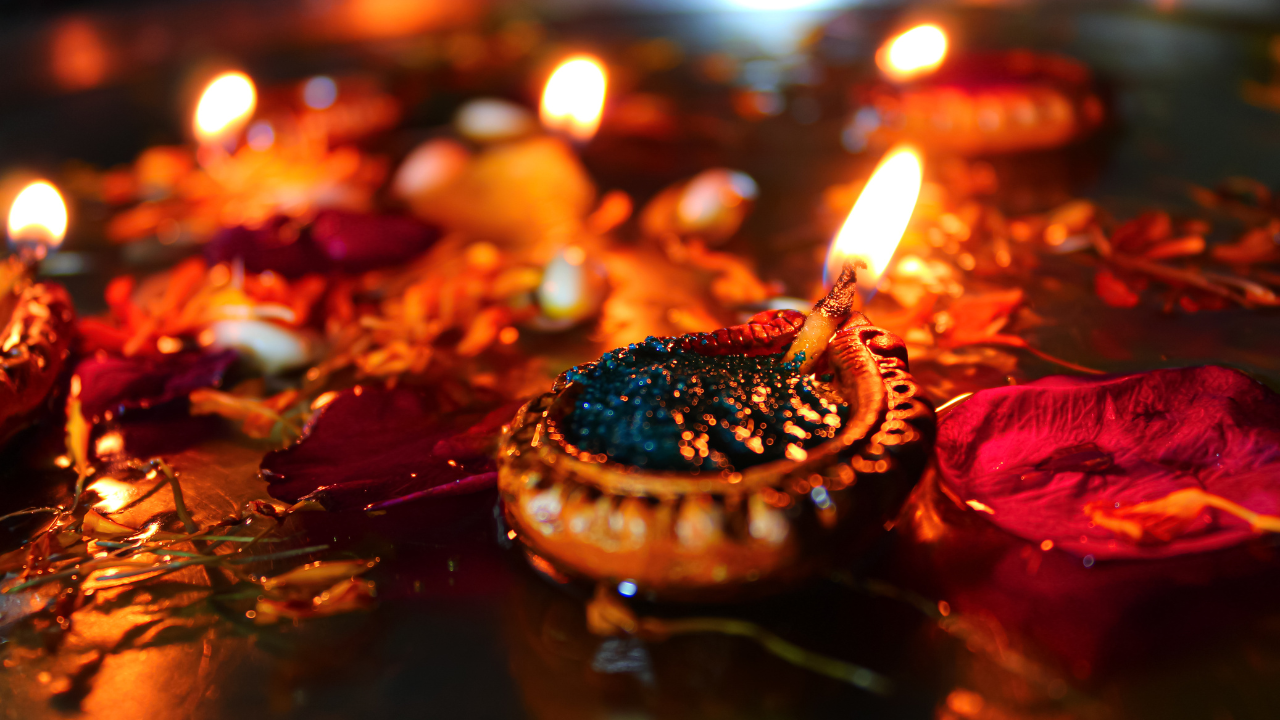Contents
8 Unique Diwali Traditions in Different Parts of India1. North India: Diwali and Ram Leela2. West Bengal: Kali Puja3. Maharashtra: Vasu Baras and Govardhan Puja4. Tamil Nadu: Thalai Diwali5. Goa: Narakasura Slaughter6. Uttar Pradesh: Dev Diwali in Varanasi7. Odisha: Kaunriya Kathi and Badabadua Daka8. Gujarat: Chopra Puja and Sharda Puja
8 Unique Diwali Traditions in Different Parts of India
Diwali is a festival that brings together diverse communities across India, with each region celebrating with its own unique customs and traditions.

Unique Diwali traditions in different parts of India (Image credit: Canva)
Diwali, the festival of lights, is one of the most widely celebrated festivals in India, symbolizing the victory of good over evil and light over darkness. While the essence of Diwali remains the same, different regions across the country have their own unique customs and traditions to celebrate this grand occasion. Here are eight distinctive Diwali traditions from different parts of India:
1. North India: Diwali and Ram Leela
In most parts of North India, Diwali celebrates Lord Rama’s return to Ayodhya after 14 years of exile and his victory over Ravana. People light oil lamps, burst crackers and decorate their homes with rangolis. The most unique tradition here is the staging of Ram Leela, a dramatic re-enactment of the Ramayana. It takes place a few days before Diwali and ends with the symbolic burning of effigies of Ravana, Meghnath and Kumbhkaran. The celebrations climax with the worship of Goddess Lakshmi on Diwali night to seek wealth and prosperity.
2. West Bengal: Kali Puja
In West Bengal, Diwali coincides with Kali Puja, dedicated to Goddess Kali, the destroyer of evil forces. While houses are decorated with lamps and lights, the focus is on the worship of Kali, the fierce form of the Mother Goddess. Large idols of Kali are worshiped in pandals (temporary structures), and devotees offer flowers, sweets and animal sacrifices to the goddess. The night is spent in prayers, with rituals continuing until the morning, creating a mystical atmosphere that differentiates it from Diwali in other regions.
3. Maharashtra: Vasu Baras and Govardhan Puja
In Maharashtra, Diwali celebrations begin with Vasu Baras, a festival where cows and calves are worshipped, recognizing their importance in agriculture and as symbols of prosperity. On Dhanteras, people buy gold or utensils as a sign of good luck. On Govardhan Puja or Padwa, the day after Diwali, Maharashtrians prepare a grand feast called Faral, which includes sweets like laddu, chakli and shankarpali. On Bhau Beej, brothers and sisters exchange gifts just like Raksha Bandhan.
4. Tamil Nadu: Thalai Diwali
In Tamil Nadu, Thalai Diwali holds special significance for newlyweds. This is the first Diwali celebrated by a couple after their marriage. The newly married couple proceed to the home of the bride’s parents, where they are showered with blessings and gifts. The morning begins with an oil bath, followed by prayers and wearing new clothes. Traditional sweets like Adirasam and Murukku are prepared. Additionally, houses are decorated with kolam (rangoli) patterns, and families light lamps to invite prosperity.
5. Goa: Narakasura Slaughter
Goa’s Diwali celebrations are clearly marked by the tradition of Narakasura Vadha, which represents the slaying of the demon Narakasura by Lord Krishna. The night before Diwali, large effigies of Narakasura are often paraded through the streets accompanied by drums and music. These effigies are burnt at dawn, symbolizing the victory of good over evil. Later, houses are decorated with earthen lamps, and people exchange sweets and gifts.
6. Uttar Pradesh: Dev Diwali in Varanasi
While Diwali is widely celebrated throughout Uttar Pradesh, the Dev Diwali festival in Varanasi is particularly noteworthy. Held on the night of Kartik Purnima, 15 days after Diwali, the ghats of the Ganga are illuminated with thousands of oil lamps in this festival. It is believed that this is the day when the gods come to earth to take a bath in the Ganges. The entire city is lit up with lights, devotees are performing rituals and lamps are floating in the river, making it a breathtaking experience.
7. Odisha: Kaunriya Kathi and Badabadua Daka
In Odisha, people follow a unique tradition called Kaunriya Kathi during Diwali. After Lakshmi Puja, families burn jute sticks in front of their homes to invoke the blessings of the ancestors. This act is known as Badabadua Daka and people pray for the safety of their ancestors. Chanting the phrase “Badbadua ho…Andhara re asa, alua re ja” (O ancestors, come into the darkness and go back into the light) is an integral part of this tradition, connecting the living with the departed souls.
8. Gujarat: Chopra Puja and Sharda Puja
In Gujarat, Diwali marks the end of the year according to the traditional Hindu calendar, and celebrations are highly business-oriented. On Dhanteras, traders and business people perform Chopra Puja, which is a ritual of worshiping their account books and starting new financial records for the new year. They seek blessings from Goddess Lakshmi to ensure a prosperous financial year ahead. This is followed by Sharda Puja, in which books and instruments related to education, business and wealth are worshipped, symbolizing a new beginning.
Get the latest news live on Times Now with breaking news and top headlines from destinations, travel and around the world.
end of article


